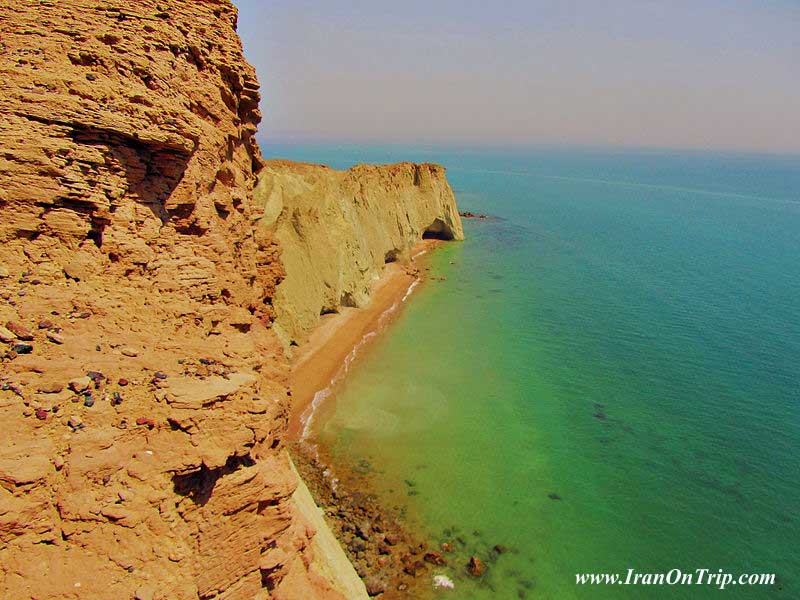Hormuz Island

Located in Bandar Abbas (a city of Hormozgan province)
Hormuz Island, also spelled Hormoz, is an Iranian island in the Persian Gulf which is located in the Strait of Hormuz and is part of the Hormozgān Province.
This mostly barren, hilly island has an area of 42 km2 (16 sq mi) and is 5 miles (8 km) off the coast. The population may decline by half in summer through migration. Hormuz village is the only permanent settlement. Resources include red ochre for export.
The highest point of the island is about 186 metres above sea level. Due to a lack of precipitation, the soil and water are salty. Specialists have helped cultivar Hara trees to grow in the climate. Due to the lack of fresh water, Iranian engineers piped water from the mainland of Iran underground.
The island was known as Organa to the ancient Greeks and as Jarun in the Islamic period. It acquired the name of Hormuz from the important harbour town of Hormuz on the mainland 60 km away which had been a center of a minor principality on both sides of the strait.
A new town was built on the northern tip of Jarun Island which was called New Hormuz for a number of years to distinguish it from the old town on the mainland until this fell into ruins. Slowly the name of the new town came to be used for the island as well.
The extremely arid and during the summer months very hot island was not an ideal location for the capital of a principality as all provisions including water had to be brought from the mainland. Its location, however, gave it a degree of security which let it grow to be a major trading port for several centuries especially as its competitors suffered repeatedly from destructions through acts of war and plunder.
The famous Venetian traveler Marco Polo twice visited Hormuz. In 1514 the Portuguese captured Hormuz and built a fort. For more than a century the island remained Portuguese, but the rise of the English locally and the Persian shah’s resentment of Portuguese occupation culminated, in 1622, in Hormuz’ capture by joint Anglo-Persian forces.
Hormoz Island is famous for its colorful soil and this lead to the idea of making the world largest soil carpet under the title of "Persian Gulf".
The soil carpet covering an area of 1250 square meters is made of 90 different colors of soil.
Before this project, the world's largest soil carpet was made on the Canary Island and measured 900 square meters. Iran's carpet soil can be regarded the world largest one and will probably make it into the Guinness Book of World Records.
.....
.....
.....

.jpg)



























